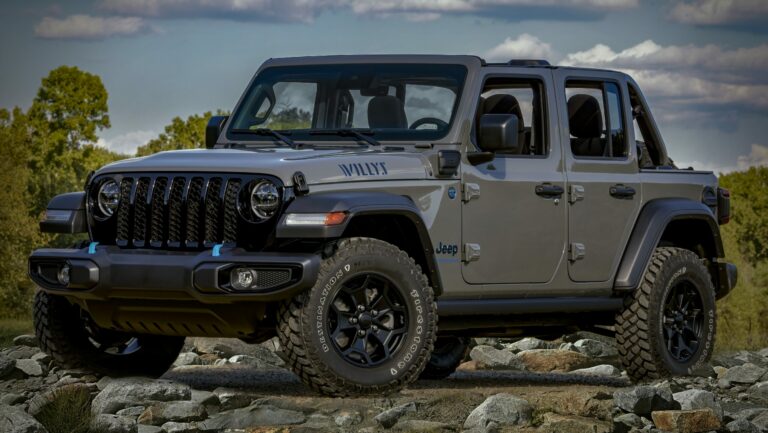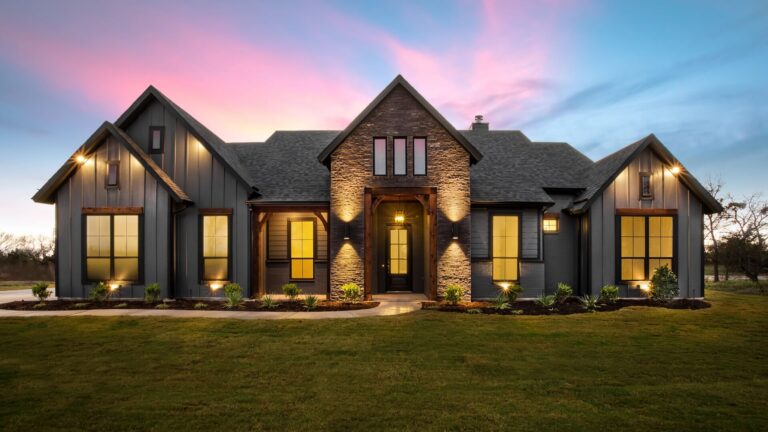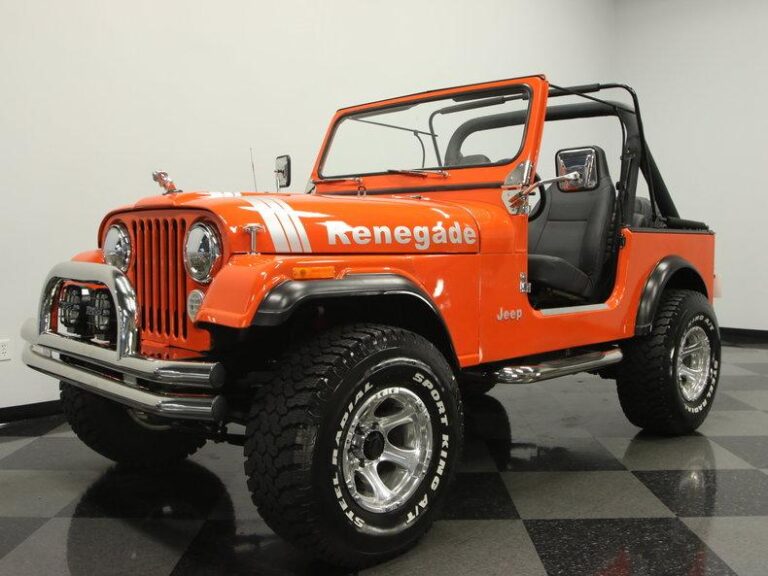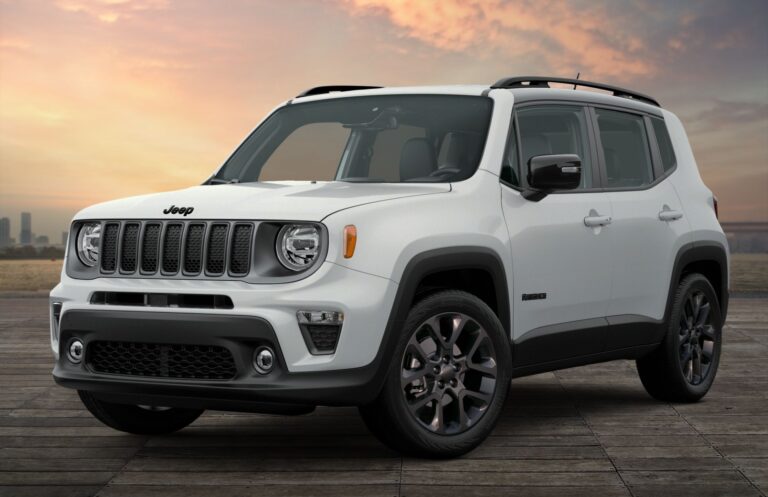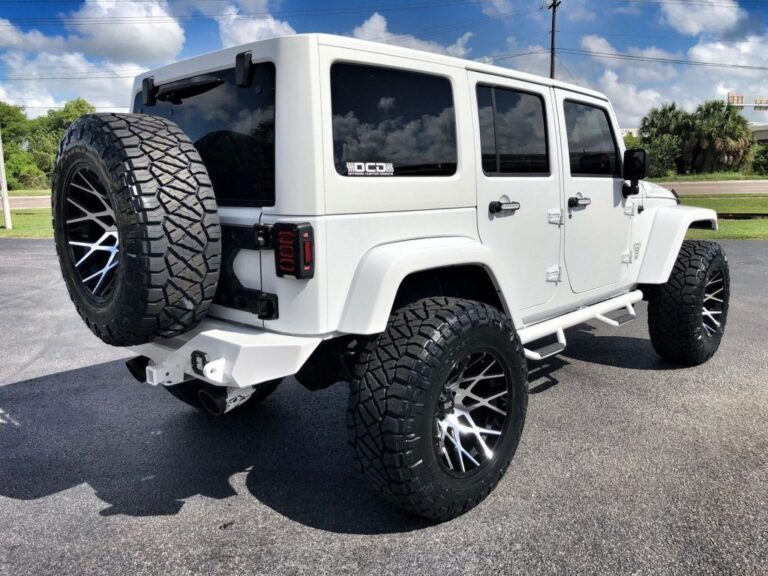M 38 Jeep For Sale: Your Comprehensive Guide to Buying, Owning, and Selling a Piece of History
M 38 Jeep For Sale: Your Comprehensive Guide to Buying, Owning, and Selling a Piece of History /jeeps.truckstrend.com
Introduction: The Enduring Legacy of the M38 Jeep
For enthusiasts of military history, vintage vehicles, and rugged utility, the "M 38 Jeep For Sale" isn’t just a search query; it’s an invitation to own a tangible piece of post-World War II American resilience. The M38, officially the Willys MC, is more than just a vehicle; it’s an icon, a testament to American engineering designed for the harsh realities of military service. Built between 1950 and 1952, primarily for the Korean War, the M38 succeeded the legendary Willys MB and Ford GPW, incorporating crucial upgrades for battlefield efficiency. Its distinctive 24-volt electrical system, waterproof ignition, heavier chassis, and reinforced components set it apart, making it a robust and reliable workhorse.
M 38 Jeep For Sale: Your Comprehensive Guide to Buying, Owning, and Selling a Piece of History
Today, the quest for an M38 Jeep for sale is often driven by a desire for historical preservation, a love for classic military vehicles, or the simple appeal of a truly rugged, no-nonsense off-roader. Whether you’re a seasoned collector looking for a concours-quality restoration, a hands-on hobbyist seeking a rewarding project, or someone who simply appreciates its unique heritage, navigating the market for an M38 requires knowledge, patience, and a keen eye. This comprehensive guide aims to equip you with the insights needed to confidently approach the world of M38 Jeep sales, from understanding its history to navigating the intricacies of purchase and ownership.
The M38 Jeep: A Brief History and Its Enduring Appeal
The M38 Jeep was a direct response to the U.S. military’s need for a more robust and capable light utility vehicle than its WWII predecessors. While visually similar to the civilian CJ-3A, the M38 was engineered from the ground up for military specifications. Its most significant innovation was the 24-volt waterproof electrical system, designed to operate in adverse conditions and power specialized equipment like radios. Other military enhancements included a larger fuel tank, heavy-duty suspension, blackout lighting, a stronger frame, and a deeper fording capability (enabled by a snorkel system in some variants).
Powered by the reliable Willys "Go-Devil" L-head four-cylinder engine, the M38 proved its mettle in the Korean conflict and continued to serve in various capacities worldwide for decades. Its robust construction, simplicity of design, and go-anywhere capability solidified its reputation. Today, this enduring appeal stems from several factors: its historical significance as a Cold War-era workhorse, its iconic design that instantly conjures images of rugged adventure, and its relative scarcity compared to the earlier MB/GPW models, making it a prized possession for collectors and enthusiasts dedicated to preserving automotive history.
Understanding the Market: What to Expect When Buying an M38
The market for M38 Jeeps is diverse, reflecting the varying conditions, originality, and levels of restoration these vehicles exhibit. Understanding these categories is crucial for setting realistic expectations and budgets.
- Project Vehicles: These are typically non-running, incomplete, or heavily rusted M38s requiring extensive work. They offer the lowest entry point but demand significant time, mechanical skill, and financial investment in parts and labor. Ideal for experienced restorers.
- Running/Driving Condition: These M38s are operational but may have cosmetic flaws, minor mechanical issues, or non-original parts. They are suitable for those who want a usable vehicle immediately and are prepared for ongoing maintenance or gradual restoration.
- Partially Restored: Vehicles that have undergone some restoration, perhaps a new engine, fresh paint, or repaired body panels, but may still need work to be fully complete or historically accurate.
- Fully Restored: These M38s have undergone a comprehensive, often frame-off, restoration. They are typically in excellent mechanical and cosmetic condition, with many original or period-correct components. Their prices reflect the significant investment in time and money.
- Concours/Museum Quality: The pinnacle of M38 restoration, these vehicles are meticulously restored to original factory specifications, often with painstaking attention to detail, correct markings, and original components. They command the highest prices and are often trailered to shows rather than driven regularly.


Factors Influencing Price: Beyond the general condition, several specifics dictate an M38’s value:
- Originality: How many original military components (engine, axles, data plates, 24V system) remain?
- Rust: The presence and extent of rust on the frame, body, and critical components is a major determinant of value and restoration cost.
- Engine and Drivetrain Condition: A strong, original "Go-Devil" engine and smooth-shifting transmission/transfer case add significant value.
- Completeness: Are all the specific M38 features present (e.g., waterproof gauges, specific lighting, pioneer tools)?
- Documentation: A clear title, military service records, or restoration logs can increase appeal and value.

Where to Look:
- Online Marketplaces: Dedicated vintage vehicle sites (e.g., Hemmings, ClassicCars.com), general classifieds (e.g., Craigslist, Facebook Marketplace), and auction sites (e.g., eBay, Bring a Trailer).
- Specialized Forums & Clubs: Military vehicle forums (e.g., G503.com), Jeep clubs, and specific M38 owner groups are excellent resources for finding vehicles and connecting with knowledgeable sellers.
- Military Vehicle Shows & Rallies: These events often have "for sale" sections and allow for in-person inspection and networking.
- Auctions: Specialized classic and military vehicle auctions can offer a wide range of M38s, but research and pre-inspection are critical.
Key Considerations Before You Buy: A Buyer’s Checklist
Purchasing an M38 Jeep is an investment of time, money, and passion. A thorough inspection and due diligence are paramount.
- Chassis & Frame: This is the backbone of the vehicle. Inspect for rust, especially around spring hangers, cross members, and body mounts. Look for any signs of cracks, bends, or amateur repairs. A rusted or compromised frame can be extremely costly to repair.
- Engine & Drivetrain:
- Engine (Willys L-head "Go-Devil"): Check for oil leaks, strange noises, smoke from the exhaust, and overall running condition. Ask about maintenance history.
- 24-Volt Electrical System: This is unique to the M38. Verify all 24V components (generator, starter, gauges, lights) are present and functional. Many M38s have been converted to 12V; decide if originality is more important than convenience. A proper 24V system adds significant value.
- Transmission & Transfer Case: Test all gears, including reverse, and the transfer case (2WD high, 4WD high, 4WD low). Listen for grinding or slipping.
- Axles: Check for leaks around the differential housings and wheel hubs. Listen for humming or clunking noises during a test drive.
- Body & Paint: Assess the extent of rust on the body tub, fenders, hood, and tailgate. Pay close attention to the floorboards, battery box area, and under the seats. Look for signs of bondo or shoddy patch jobs. If originality is a concern, research correct military markings and paint schemes.
- Steering & Suspension: Check for excessive play in the steering wheel. Inspect leaf springs for cracks or sagging. Examine shock absorbers for leaks.
- Brakes: Ensure the brakes are functional and pull evenly. Check for fluid leaks. Given the age, a complete brake overhaul is often necessary.
- Documentation: A clear title is essential. Any military history, maintenance records, or previous restoration documentation adds value and authenticity. Verify the VIN/serial number matches the title and the vehicle’s data plates.
- Parts Availability: While many parts are interchangeable with the civilian CJ-3A, specific M38 components (especially 24V electrical parts, unique body stampings, and military accessories) can be harder to source. Research parts suppliers before committing to a project.
The Restoration Journey: From Project to Pristine
For many M38 owners, the vehicle isn’t just something to drive; it’s a canvas for historical preservation. The restoration journey can be incredibly rewarding but also challenging.
- Types of Restoration:
- Sympathetic Restoration: Focusing on mechanical soundness and preserving the vehicle’s "patina" and character, rather than a full cosmetic overhaul.
- Driver Restoration: Aiming for a reliable, safe, and presentable vehicle that can be regularly driven, perhaps with some modern upgrades for usability.
- Full Frame-Off Restoration: Disassembling the vehicle to its bare frame, restoring or replacing every component, and repainting to original specifications. This is the most extensive and costly.
- Restomod: Blending restoration with modern modifications (e.g., a modern engine, power steering, disc brakes) for improved performance and comfort, while retaining the classic look.
- Challenges:
- Rust: The most common and time-consuming challenge, often requiring extensive cutting, welding, and panel fabrication.
- Sourcing Original Parts: Especially for the 24V electrical system or specific M38 military components, finding NOS (New Old Stock) or good used original parts can be a treasure hunt. Reproductions are available but may not always be historically accurate.
- 24V Electrical System: Understanding and troubleshooting the unique 24V system requires specialized knowledge. Many general mechanics may not be familiar with it.
- Benefits:
- Preserving History: Contributing to the longevity of a significant military vehicle.
- Personal Satisfaction: The immense pride of bringing a piece of history back to life with your own hands or through careful curation.
- Increased Value: A well-executed, historically accurate restoration significantly enhances the M38’s market value.
- DIY vs. Professional: Deciding whether to undertake the restoration yourself or hire a specialist depends on your skills, time, budget, and desired outcome. DIY saves labor costs but requires significant personal investment. Professional restorers ensure high-quality results but come at a premium.
Selling Your M38 Jeep: Maximizing Its Value
If you’re considering selling your M38, proper preparation and presentation can significantly impact its value and the speed of sale.
- Preparation is Key:
- Clean Thoroughly: A clean vehicle presents much better. Wash, wax, and clean the interior, engine bay, and undercarriage.
- Minor Repairs: Address any small, easy-to-fix issues (e.g., non-working lights, loose trim) that might deter buyers.
- Detailed Photography: Take high-quality photos from all angles – exterior, interior, engine bay, undercarriage, and close-ups of specific features or any imperfections. Video walkarounds are also highly effective.
- Gather Documentation: Assemble all titles, service records, military history (if known), and any restoration invoices or photo logs. This transparency builds trust and adds value.
- Write a Compelling Description:
- Be honest and detailed about the vehicle’s condition, including any flaws.
- Highlight its unique M38 features (24V system, military markings, specific equipment).
- Mention its history, any known provenance, or unique stories.
- Specify if it’s a running driver, a project, or a restored vehicle.
- Pricing Strategy:
- Research the Market: Look at recently sold M38s in similar condition on various platforms to gauge realistic pricing.
- Consider Your Investment: Factor in the cost of purchase, parts, and labor, but be realistic about what the market will bear.
- Be Prepared to Negotiate: Most buyers will expect some room for negotiation.
- Where to Sell: Utilize the same channels as buyers (online marketplaces, forums, auctions). Specialized military vehicle classifieds often yield the most serious buyers.
- Handling Inquiries and Test Drives: Be responsive and polite. Be prepared to answer detailed questions. For test drives, ensure the buyer is insured and capable of operating a vintage vehicle. Consider having a bill of sale prepared in advance.
Practical Advice & Actionable Insights
- For Buyers:
- Define Your Purpose: Are you looking for a show vehicle, an off-roader, or a restoration project? This will guide your search and budget.
- Set a Realistic Budget: Factor in not just the purchase price, but also potential restoration costs, parts, shipping, insurance, and ongoing maintenance.
- Get a Pre-Purchase Inspection (PPI): If possible, have a qualified mechanic or military vehicle specialist inspect the M38, especially if you’re not local.
- Join Owner Groups: Online forums and local clubs are invaluable resources for advice, parts, and networking.
- Patience is Key: The right M38 might not appear overnight. Don’t rush into a purchase.
- For Sellers:
- Be Transparent: Honesty about the vehicle’s condition, both good and bad, builds trust and avoids issues later.
- Know Your Vehicle’s Worth: Don’t underprice your M38, especially if it’s well-maintained or restored.
- Highlight Uniqueness: Emphasize the M38’s specific military features that differentiate it from civilian Jeeps.
- Be Prepared for Enthusiasts: M38 buyers are often passionate and knowledgeable; be ready for detailed questions.
M38 Jeep For Sale: Estimated Price Ranges
The price of an M38 Jeep can vary wildly depending on its condition, originality, and location. The table below provides a general guide. These are estimates and actual prices may differ based on specific market conditions, unique features, or seller urgency.
| Condition Category | Description | Estimated Price Range (USD) | Key Considerations |
|---|---|---|---|
| Project/Parts Vehicle | Non-running, heavily rusted, incomplete, or requiring extensive mechanical and body work. May be suitable for parts donation or a full frame-off restoration by a very experienced individual. | $3,000 – $8,000 | Significant investment in time, parts, and labor required. Often lacks a clear title. Best for seasoned restorers or those needing specific M38 components. |
| Running/Driving (Rough) | Starts and runs, but has significant cosmetic flaws (dents, rust, poor paint), mechanical issues (leaks, worn components), or non-original parts. Requires immediate attention for reliability and safety. | $8,000 – $15,000 | Good for someone wanting a usable M38 immediately and willing to perform ongoing repairs and gradual improvements. Inspect frame and major components thoroughly for hidden issues. |
| Running/Driving (Good) | Operational and relatively reliable. May have some cosmetic imperfections, minor mechanical quirks, or non-original civilian components (e.g., 12V conversion). Suitable for regular driving or as a solid base for a moderate restoration. | $15,000 – $25,000 | Offers a good balance of usability and potential for improvement. Check for originality of M38-specific parts. Consider a pre-purchase inspection. |
| Partially Restored | Has undergone significant work (e.g., engine rebuild, new paint, some bodywork) but is not fully complete or historically accurate. May need finishing touches or further restoration to reach a higher standard. | $20,000 – $35,000 | Review documentation of work done. Assess the quality of the restoration work. Identify remaining tasks and their associated costs. Can be a good value if the hard work is done well. |
| Fully Restored | Comprehensive frame-off restoration, excellent mechanical and cosmetic condition. Majority of components are original or high-quality reproductions. Typically runs and drives very well, presentable at shows. May or may not be 100% historically accurate. | $35,000 – $55,000 | Inspect the quality of the restoration; look for attention to detail. Verify originality claims. Often ready to drive and enjoy with minimal immediate work. |
| Concours/Museum Quality | Meticulously restored to factory specifications, often with NOS parts and extreme attention to historical accuracy (paint, markings, specific M38 features). Flawless presentation, often trailered to shows. The highest echelon of M38 ownership. | $55,000 – $80,000+ | Requires expert knowledge to verify authenticity. Documentation of restoration process and provenance is crucial. Primarily for serious collectors and museum display, not typically for regular driving. Prices can exceed $100,000 for exceptional examples with rare features or history. |
Frequently Asked Questions (FAQ) about M38 Jeeps
Q1: Is the M38 Jeep street legal?
A1: Generally, yes, if it has a clear title and meets local road safety requirements (lights, brakes, etc.). However, due to their age and lack of modern safety features, they may not be suitable for high-speed highway driving. Always check your local vehicle registration and inspection laws.
Q2: What’s the main difference between an M38 and a civilian CJ-3A?
A2: While visually similar, the M38 is a military-spec vehicle with significant upgrades. Key differences include the M38’s 24-volt electrical system (vs. 6V/12V for CJ-3A), stronger frame, larger leaf springs, waterproof ignition, deeper body tub with an inverted "T" brace in the tailgate, blackout lights, and unique military gauges.
Q3: Are parts hard to find for an M38?
A3: Many mechanical parts are interchangeable with the CJ-3A, making them relatively accessible. However, M38-specific components, especially original 24V electrical parts, unique body stampings, and military accessories, can be challenging and costly to source. A network of specialized suppliers and fellow enthusiasts is invaluable.
Q4: Can I convert an M38 to a 12-volt electrical system?
A4: Yes, many M38s have been converted to 12V for convenience, as 12V components (batteries, alternators, radios) are more common and cheaper. However, this conversion diminishes the vehicle’s originality and historical accuracy, which can affect its value to purists. It requires careful planning and execution.
Q5: What’s a fair price for an M38 Jeep?
A5: As detailed in the price table, the fair price varies greatly depending on condition, originality, and whether it’s a project or a fully restored vehicle. A project M38 might start around $3,000-$8,000, while a concours-quality example could fetch $55,000 or more. Research similar sales and consider a pre-purchase inspection.
Q6: Are M38s good for off-roading?
A6: Absolutely! The M38 was built for rugged military use and excels off-road. Its robust chassis, strong axles, and durable Go-Devil engine make it a capable and reliable trail machine. However, respect its age and limitations, and ensure all mechanical systems are in good order before tackling challenging terrain.
Conclusion: More Than Just a Vehicle, It’s a Journey
The journey of finding, owning, or selling an M38 Jeep is far more than a simple transaction; it’s an immersion into a unique segment of automotive history. These rugged machines, born of necessity and tested in conflict, represent a bygone era of straightforward, durable engineering. Whether you’re drawn to their historical significance, their iconic aesthetic, or their undeniable off-road prowess, the M38 offers an experience unlike modern vehicles.
Approaching the "M 38 Jeep For Sale" market with knowledge, patience, and a clear understanding of your goals will ensure a rewarding experience. For buyers, it’s about finding that perfect balance between historical integrity and practical usability. For sellers, it’s about finding the right custodian for a piece of American heritage. In either case, the M38 Jeep remains a cherished icon, a testament to enduring design, and a vehicle that continues to capture the hearts of enthusiasts worldwide.
![]()

